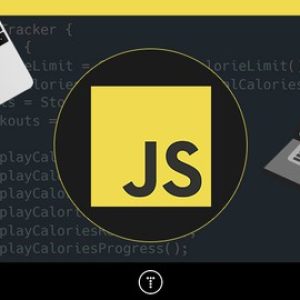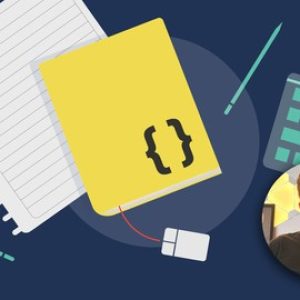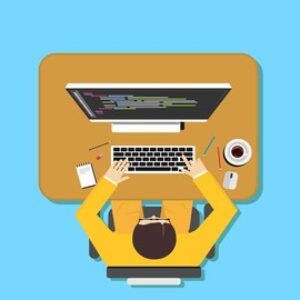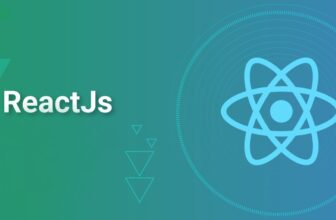
JavaScript Data Structures & Algorithms + LEETCODE Exercises

Learn JavaScript Quick start Guide for Beginners
JavaScript is one of the most popular programming languages today, essential for web development and powering millions of websites and applications around the world. If you’re looking to learn JavaScript, Udemy is an excellent platform that offers a wide range of courses, from beginner to advanced levels. In this article, we’ll guide you through what makes a JavaScript course on Udemy truly outstanding, covering key aspects you should consider when choosing the best course for your needs.
Whether you’re a complete beginner or an experienced developer looking to hone your skills, here’s what you should look for in a top-notch JavaScript course on Udemy.
Why Learn JavaScript?
JavaScript is a must-have skill in the web development industry, and here’s why:
- Essential for Frontend Development: JavaScript is integral to frontend development and is widely used in frameworks like React, Vue, and Angular.
- Backend Potential with Node.js: JavaScript isn’t just for the front end. With Node.js, it’s also used for backend development, making it a versatile skill.
- High Demand in the Job Market: JavaScript is one of the most sought-after skills in the tech job market, with developers who are proficient in JavaScript finding abundant opportunities.
Why Choose Udemy for Learning JavaScript?
Udemy offers several advantages that make it an attractive choice for JavaScript courses:
- Affordable Pricing: With frequent discounts and lifetime access, Udemy courses are budget-friendly.
- Variety of Courses: From introductory courses to specialized frameworks like React or Node.js, Udemy provides a wide range.
- Self-Paced Learning: You can progress through the courses at your own pace, which is ideal for learners balancing other commitments.
- Community and Q&A Support: Most Udemy courses have active Q&A sections where instructors and other learners provide support and answers to questions.
Key Features to Look For in a JavaScript Course
When selecting the best JavaScript course on Udemy, there are several important features to consider:
1. Course Content and Structure
- A quality JavaScript course should cover the fundamentals, including variables, functions, loops, objects, and event handling.
- It should progress into advanced topics like asynchronous programming, closures, and DOM manipulation.
- Look for a course that incorporates hands-on projects to help you apply what you’ve learned.
2. Focus on Real-World Applications
- The best courses go beyond theory, emphasizing practical applications.
- Look for courses that involve building real-world projects like interactive websites, games, or applications.
- Learning through projects helps you retain concepts and gain experience relevant to actual development work.
3. Clear and Engaging Instruction
- Good instructors make complex topics easier to understand. Check the course previews to get a sense of the instructor’s teaching style.
- High-quality visuals, well-organized content, and clear explanations make a big difference.
4. Hands-On Exercises and Challenges
- Look for courses that include quizzes, coding challenges, or exercises at the end of each section. These reinforce learning and allow you to test your knowledge.
- Projects should also include code-alongs where you can build a project alongside the instructor.
5. Updated Content
- JavaScript evolves, and it’s crucial that the course content is up-to-date with the latest language features (like ES6+ syntax) and best practices.
- Check the course’s last update date to ensure you’re learning current JavaScript standards.
6. Instructor Reputation and Reviews
- Courses taught by industry professionals or instructors with high ratings tend to be well-organized and insightful.
- Look for courses with positive feedback, particularly ones that mention clarity, engagement, and comprehensive content.
7. Responsive Q&A and Community Support
- Udemy courses usually have a Q&A section where students can ask questions.
- Courses where instructors or teaching assistants actively respond to questions tend to offer better support, making it easier to overcome challenges as you learn.
Topics Covered in an Ideal JavaScript Course
To give you a more detailed idea of what an excellent JavaScript course should cover, here’s a breakdown of essential topics:
1. Basics of JavaScript
- Introduction to JavaScript syntax and structure.
- Working with variables, data types, operators, and control flow (loops, conditions).
- Understanding functions, scope, and closures.
2. Intermediate JavaScript Concepts
- Manipulating the DOM (Document Object Model) to create interactive web pages.
- Event handling and event listeners to capture user actions.
- Working with arrays, objects, and JSON data formats.
3. Advanced JavaScript Concepts
- Promises, async/await, and handling asynchronous operations.
- Error handling and debugging techniques.
- Object-oriented programming (OOP) principles and using JavaScript classes.
4. Working with JavaScript Frameworks and Libraries
- While the core focus should be on JavaScript itself, courses that offer a glimpse into frameworks like React, Angular, or Vue can be beneficial for those looking to expand their skill set.
- An introduction to jQuery can also be helpful for working on legacy projects.
5. Integrating JavaScript with Backend Technologies
- Some courses cover backend integration using Node.js, Express.js, and databases.
- Understanding how JavaScript works on both client-side and server-side can make you a more versatile developer.
6. Project-Based Learning
- Courses that include comprehensive projects help you apply what you’ve learned.
- Building real-world applications like to-do lists, weather apps, calculators, or e-commerce sites showcases your skills and gives you practical experience.
How to Assess a JavaScript Course Before Enrolling
To choose the right JavaScript course, consider these steps:
- Read the Reviews Carefully: Look for comments from past students about course clarity, depth, and instructor responsiveness.
- Check the Course Preview: Most Udemy courses offer a preview. Watch these videos to evaluate if the teaching style suits you.
- Explore the Course Curriculum: Browse the curriculum to ensure it covers the topics you need and includes projects that align with your learning goals.
- Look for Supplementary Materials: Some courses offer downloadable resources, like coding exercises and cheat sheets. These can be valuable for offline practice.
Why Practical Projects Matter in Learning JavaScript
A good JavaScript course doesn’t just teach you the syntax; it teaches you how to use JavaScript in practical applications. Working on projects is a powerful way to cement your learning. Some examples of practical projects include:
- Interactive Web Pages: Adding dynamic elements to websites, such as responsive forms, modals, and dropdown menus.
- Games and Animations: Building simple games like tic-tac-toe, which reinforce logic and problem-solving skills.
- Single Page Applications (SPAs): Using JavaScript to load content dynamically without page reloads, giving users a smooth experience.
These projects help you build a portfolio, demonstrating your skills to potential employers.
Conclusion
Choosing the best JavaScript course on Udemy depends on several factors, from your current skill level to your learning style and the specific skills you want to develop. By focusing on courses that are up-to-date, project-oriented, and taught by engaging instructors, you can gain a solid foundation in JavaScript and develop real-world skills.
When it comes to JavaScript, practice and hands-on projects are key. With the right course, you’ll not only understand JavaScript but also become confident in using it for web development. Udemy offers many choices, so take the time to find a course that meets your goals, fits your schedule, and offers valuable, practical knowledge that will benefit your coding journey.

